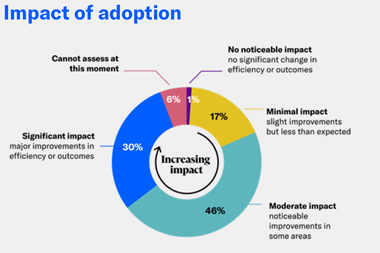The blurring of personal and professional life has increased cyber vulnerability - Mimecast research
Research by Mimecast has highlighted the need for better awareness training, as people are clicking on links or opening suspicious emails despite having been trained.
It found that 73% of respondents extensively use their company-issued device for personal matters, with nearly two-thirds (60%) admitting to an increase in frequency since starting to work remotely.
The most common activities were checking personal email (47%), carrying out financial transactions (38%) and online shopping (35%). According to the State of Email Security 2020 report, personal email and browsing the web/shopping online were already two areas of major concern for IT professionals.
Seventy-three percent said there was a risk to checking personal email as the cause of a serious security mistake, and 69% thought surfing the web or online shopping could likely cause an incident.
Encouragingly, 96% of respondents claim to be aware that links in email, on social media sites and on websites can potentially infect their devices. Sixty-four percent have even received special cybersecurity awareness training related to working from home during the pandemic.
However, this doesn’t always translate into putting this knowledge into practice.
Nearly half (45%) of survey respondents admitted to opening emails that they considered to be suspicious. The same percentage admitted to not reporting suspicious emails to their IT or security teams.
The research also highlights themes of a strong disconnect in certain countries. The US and UAE both had the majority of respondents (78% and 81% respectively) stating that they’ve had special awareness training this year, yet 60% (USA) and 61% (UAE) still opened emails they considered to be suspicious.
“This research shows that while there is a lot of awareness training offered, most of training content and frequency is completely ineffective at winning the hearts and minds of employees to reduce today’s cyber security risks,” said Josh Douglas, vice president of threat intelligence.
“Better training is crucial to avoid putting any organisation at risk. Employees need to be engaged, and trainings need to be short, visual, relevant and include humour to make the message resonate.”
Despite being the most tech savvy generation, younger workers may be putting organizations at greater risk.
Surprisingly almost 60 percent of the 16-24 age group admitted to opening emails even though they looked suspicious. This group is also more guilty of blurring the lines between their business and personal usage of these devices.
Seventy-nine percent of the 16-24 age group reported using their issued devices for personal use, while only 42% of the older - 55+ - group admitted the same.
“Security professionals need to ensure their organisation isn’t growing more exposed as threats evolve to better target the unsuspecting,” commented Douglas. “With everyone’s home becoming their new office, classroom and place of residence, it’s not really a surprise that employees are using their company-issued devices for personal use. However, this is also a big opportunity for threat actors to target victims in new ways.”
“We’ve seen attacks become more aggressive and the attack surface has expanded due to the new ‘WFH’ or hybrid work environments.”
Respondents averaged 1.9 hours of personal activity on their work devices a day, with almost a quarter (22%) clocking more than 3 hours of non-work-related screen time.
The research also revealed how habits differ between males and females. Seventy-eight percent of men reported using their corporate device for personal business versus 65% of women.




















No comments yet